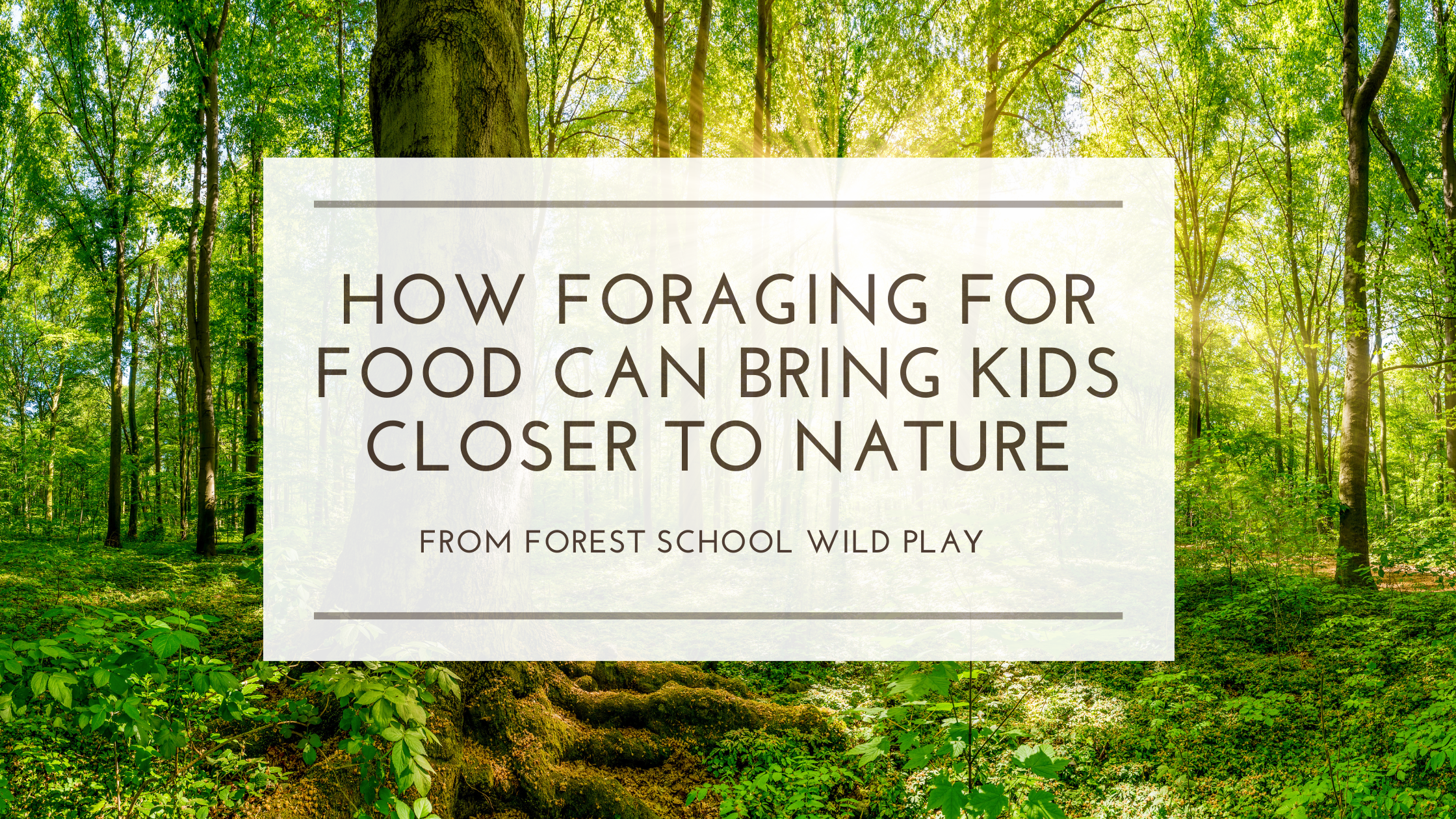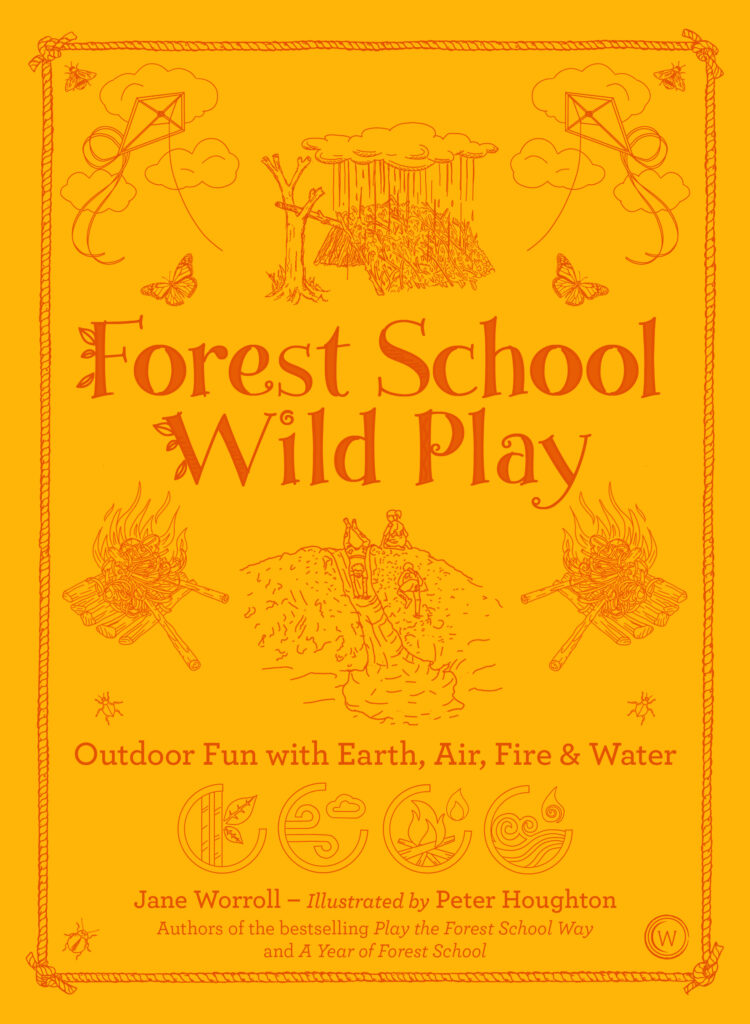Forest School Wild Play: How Foraging for Food Can Bring Kids Closer to Nature

Foraging for food is so exciting – a fantastic opportunity to tap back into our ancient hunter-gatherer past. As you hunt for tasty morsels, you become fully focused, your eyes scanning the natural world in a totally new way and discovering all sorts of unpredictable things, from caterpillars rolled up in their leaf houses to intricate spider webs and glistening, busy beetles. And then there is the anticipation and curiosity around tasting something new or revisiting a favourite flavour! All connect us deeply to the natural world around us.
This healthy, active pastime encourages us to think about where our food comes from and the amount of time, space and energy needed for its production. It can inspire a desire to cook and find out about nutrition. Apart from learning how to identify a particular plant, it can also trigger an interest in how that plant links to its native habitat and the other species that rely on it. This activity opens up a world of learning, which leads to curiosity, communication and focus, and to feelings of self-esteem and confidence. Finding and making delicious natural food, and knowing its benefits, can also foster a sense of independence as well as food to share!
Try your hand at a fun, foraging adventure this summer with Birch Twig Tea.
MAKE BIRCH TWIG TEA
The graceful birch used in this tea is one of the first trees to unfurl its leaves after a winter sleep and as such embodies spring and new beginnings. Its bright green leaves radiate the freshness of that season – but you can make this brew all year round.
Get ready
- There are over 50 species of birch tree around the world, so before you head out make sure you are familiar with which one you are foraging for. Here we will be using either silver birch (Betula pendula), which is native to Europe and parts of Asia, or black birch (Betula lenta), which is native to eastern North America.
- Once at your chosen site, use real examples of the tree species or a guide to show everyone what they will be looking for. Explain how they should only take what they need and why it is important not to damage the trees by tearing branches, so they can continue to grow and be available for other creatures to use as food and shelter.
Get set
- You are looking for a tree with plenty of of fresh, thin twigs with buds on. You can tell if the twigs are dead as they will be brittle and snap off. Fresh twigs will flex and can smell of wintergreen (a mild mint). They will also be green under the outer bark, which you can check by gently scraping the outer bark away.
- Once you’ve found a suitable tree, demonstrate how to use secateurs to prune the twigs. Keep the sharp blade on top and cut down through the twig onto the blunt part of the blade. Branches that are larger than the diameter of your thumb should not be cut with secateurs. Assist younger children but allow capable older kids to have a go at cutting and collecting the birch in a container. In terms of quantity, a strong tea will require more twigs – but start with enough twigs to quarter-fill each cup
- After each pruning session, wipe down your secateurs at home with warm, soapy water. This will prevent gummy build-up, keep them clean and prevent the spreading of any potential disease
Go!
- Once you have harvested your twigs, cut them into small sections that are roughly 2.5–5cm (1–2in) long – small enough to fit in a cup. Rinse the twigs clean with water and take this opportunity to also clean your own hands before making the tea.
- There are various ways you can make the birch tea – here are a few suggestions for you to experiment with. If you have brought some sweetener along, don’t forget to add this to your tea.
- If you don’t have a campfire, quarter-fill each cup with the rinsed birch twigs and pour over the hot water from your thermos. Allow to steep for 10 minutes (or up to 30 minutes for a stronger flavour), then strain the brew into a clean cup and drink. If you have a second thermos, you can add more hot water to warm up the steeped tea.
- Boiling your twigs over an open fire is great fun. Quarter-fill your kettle or cooking pot with twigs, then cover with water. Bring to the boil, then leave to cool before straining and drinking the tea. Alternatively, you can heat the water until it is not quite boiling and then pour over the twigs in a cup, cover and steep as desired, before straining and enjoying. This is the preferred method for some, as boiling the twigs can evaporate the oils that give the tea its flavour and herbal qualities.
- You could also process some of your gathered twigs to steep overnight. Choose twigs with up to an average thickness of a pencil. Cut them into pieces that are roughly 15cm (6in) long. Fill a quart Mason jar (or equivalent) with the twigs, then cover with warm (not boiling) water and leave to steep overnight. The water will turn amber or pink in colour and will have a strong flavour. Serve it cold or gently warmed.

Aimed at parents, teachers and Forest School leaders, this new book from Jane Worroll & Peter Houghton is packed full of fantastic new Forest School activities. It has a special focus on the elements and on making children feel connected to the natural world through imagination and storytelling.


